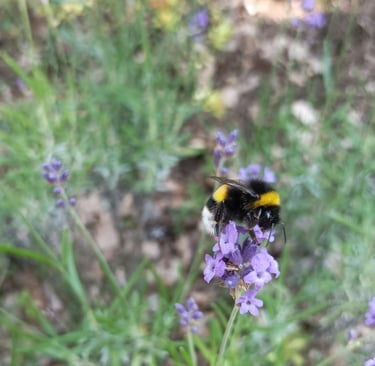
Busy busy Bees
With a little help from Ikea
Joan
4/12/20243 min read
When I was a child, I only knew of one kind of bee. It was fat and fuzzy, with yellow and black stripes, and was best avoided. Oh yes, and it gave us honey. It is only since I came to France that I became aware that there are many different kinds of bee. Indeed, they need not even be yellow and black. What's more, far from avoiding them, I now realise what an important ecological role they play. We shall do our very best to encourage them at Domaine des Rochers.


Today is one of the sunniest and warmest days we have had this spring and the air is abuzz. The mason bees are working hard . At one time these small bees used to come into our conservatory, and become trapped. Clearly something was attracting them, but what was it? This year they are content to remain just outside. So what's it all about? The answer is Ikea ! So what's a Swedish furniture manufacturer got to do with bees? Here are the wooden Ikea storage shelves that they are buzzing around which have now been moved outside to our patio. What's the great attraction?

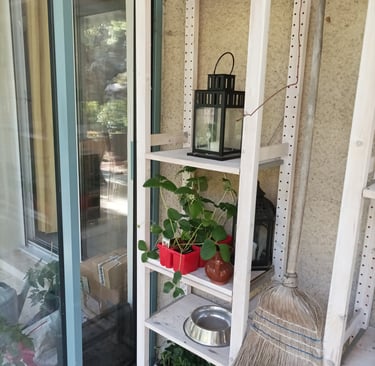
Look closely and you will see that each wooden support is punctuated by a series of holes. By inserting pegs at the desired height, we can custom build our storage space with shelves at the desired height. Thank you Ikea! But it is not just we who must thank Ikea, it is the bees. For female mason bees nest in naturally occurring crevices and cavities like tubular twigs, or the nests of wood boring beetles. When it comes to Ikea furniture, with its myriads of empty cylindrical holes...why, nothing could be better. Just look !
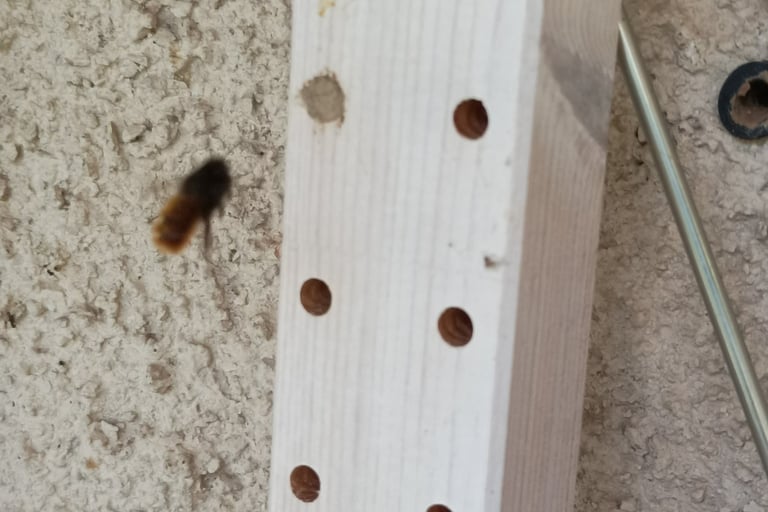



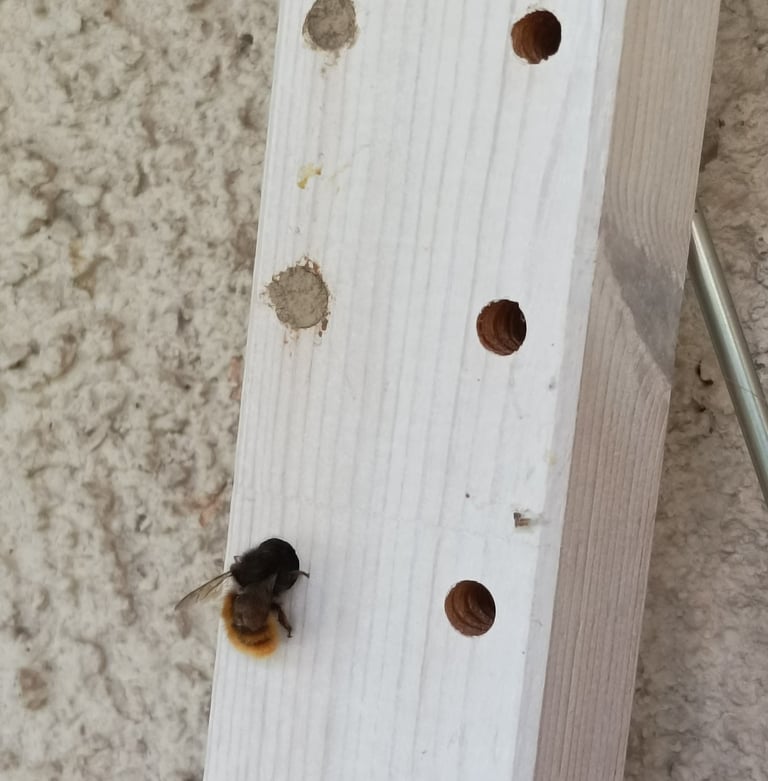

Shortly after mating, the female bee selects a nesting site and begins collecting pollen and nectar. After she has stuffed the crevice with a good supply of food , she backs in, lays her first egg on top, then blocks the crevice with mud. Then she returns, to lay more eggs, each time creating a new cell with another plug of mud. When the hole is full she will go on to find another. Further examination reveals scores of mud filled holes in our patio furniture. Bravo to the busy mason bee. You are welcome back any time to build your nests here.
Another of my favourite bees is the large blue black carpenter bee. Who ever thought that bees just came in black and yellow? These bees are around just now , and there is no more beautiful sight when the sun catches their bluey black sheen against the shocking pink of the flowering Judas tree.
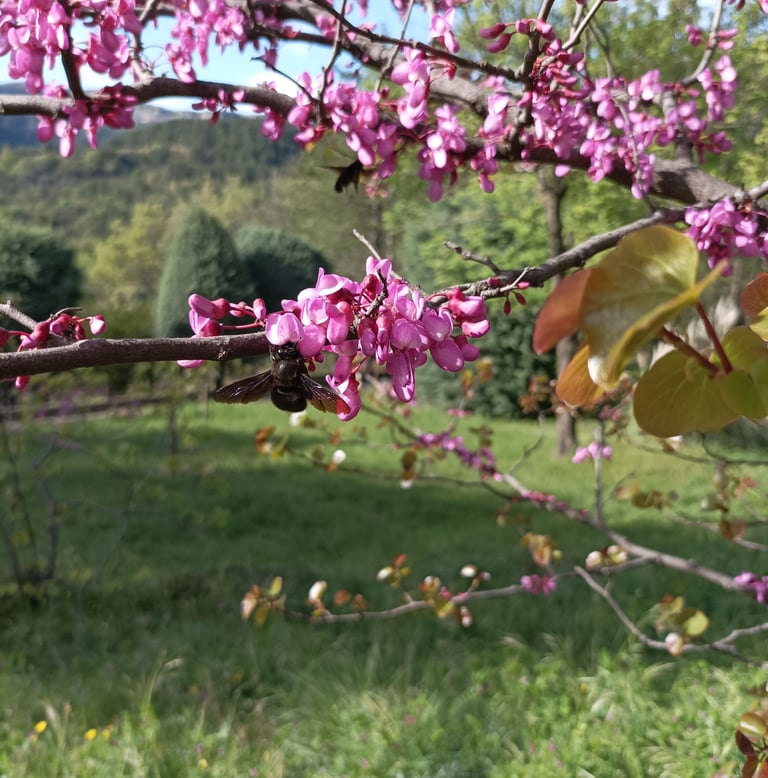

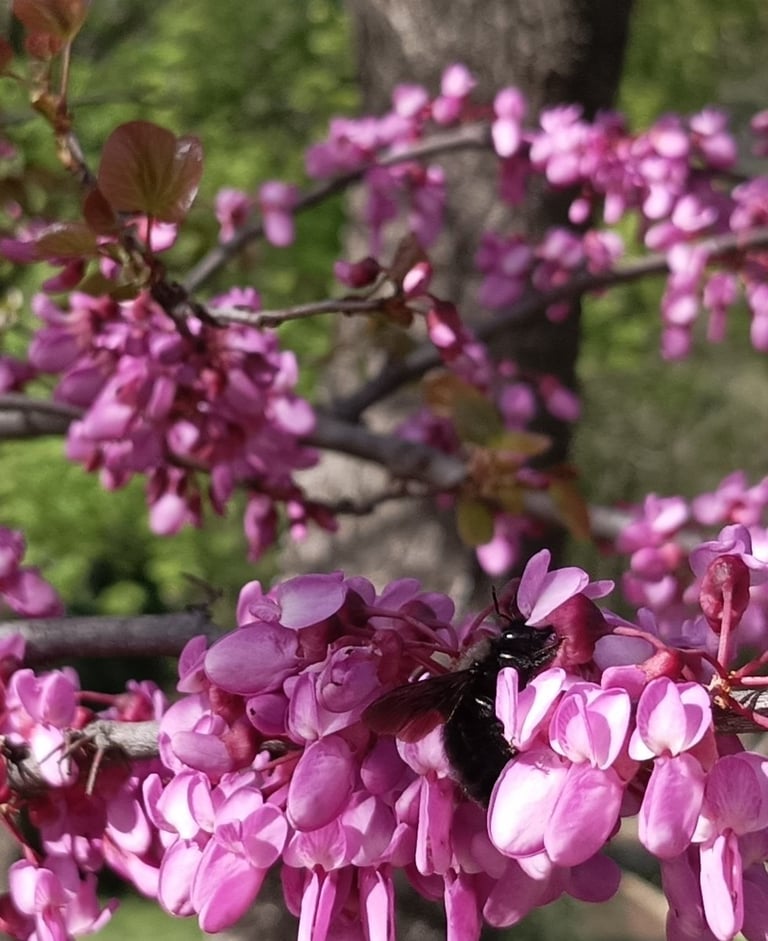



Did you know that there are over 20,000 known species of bees? (I didn't) Most bees, such as the carpenter and the mason bees are solitary , unlike the honey and bumble bees who live in colonies. Soon more bees will be appearing in our garden , and I look forward to the time when the lavender is in full flower, and we can enjoy watching the myriads of pollinating insects that flock to feed on its nectar. But it must be said, that on a summer evening, long after the butterflies, wasps and hummingbird hawk moths have left the scene, the bees will still be working hard. Yes, they are always 'busy as bees!'

